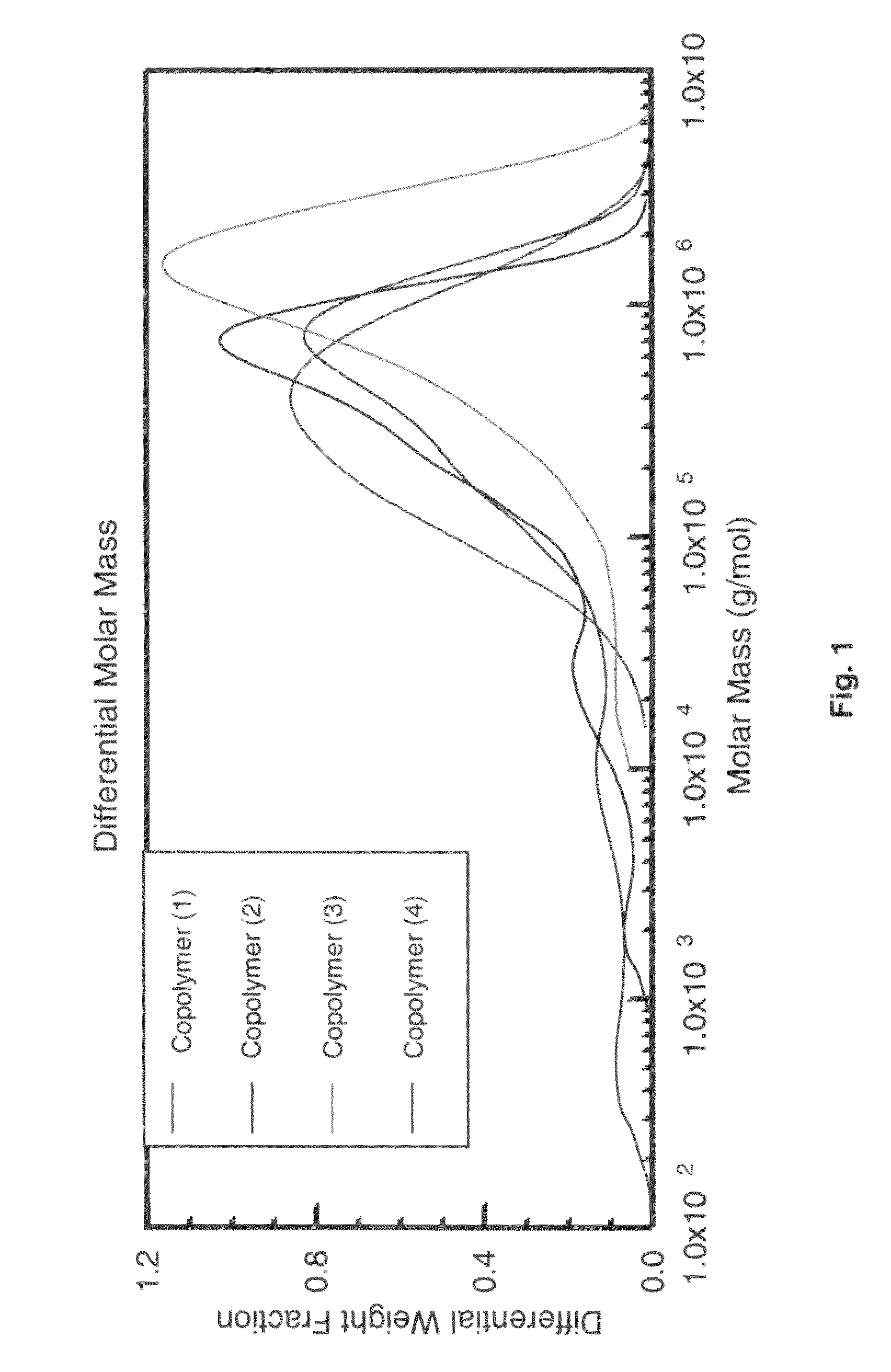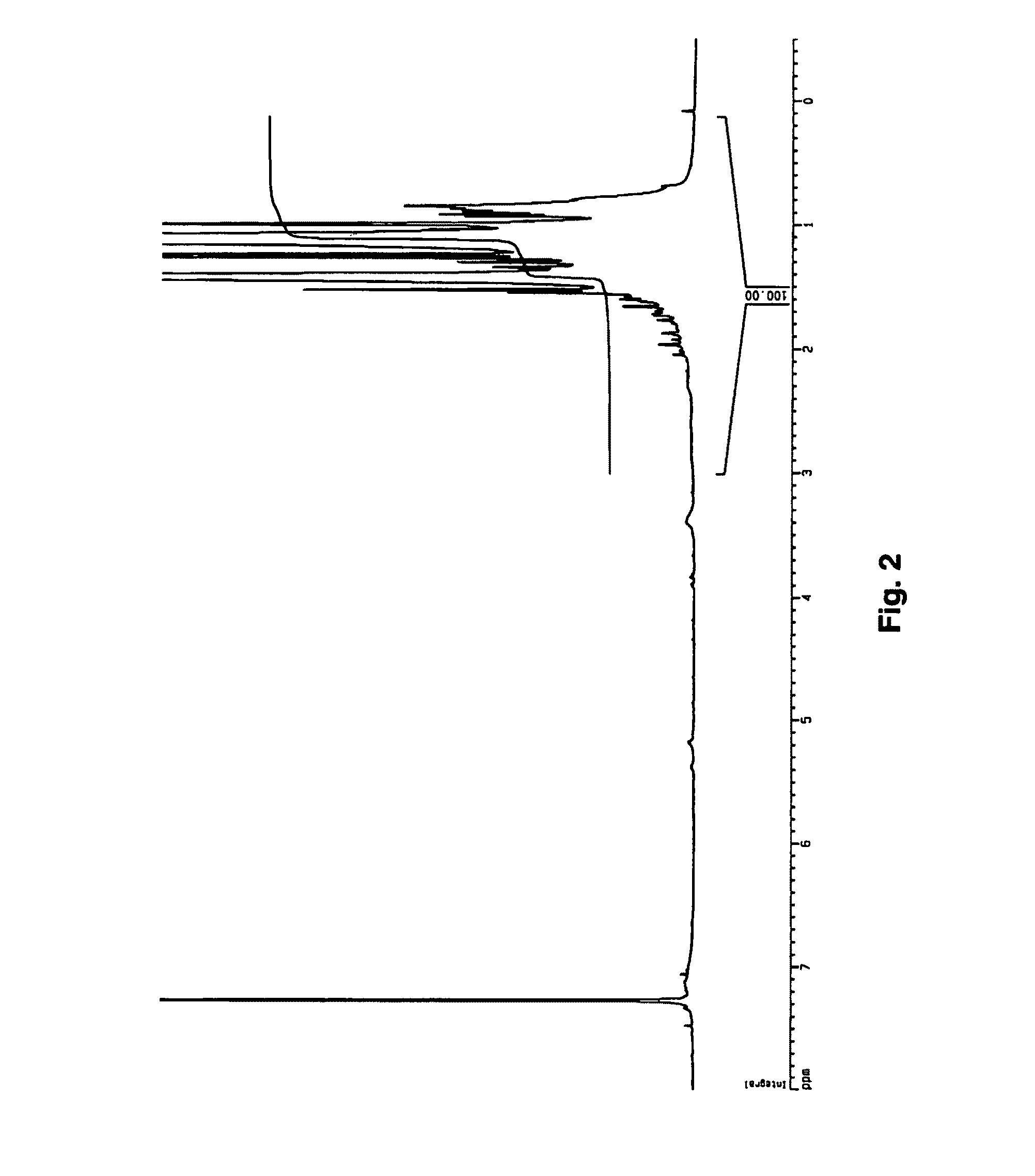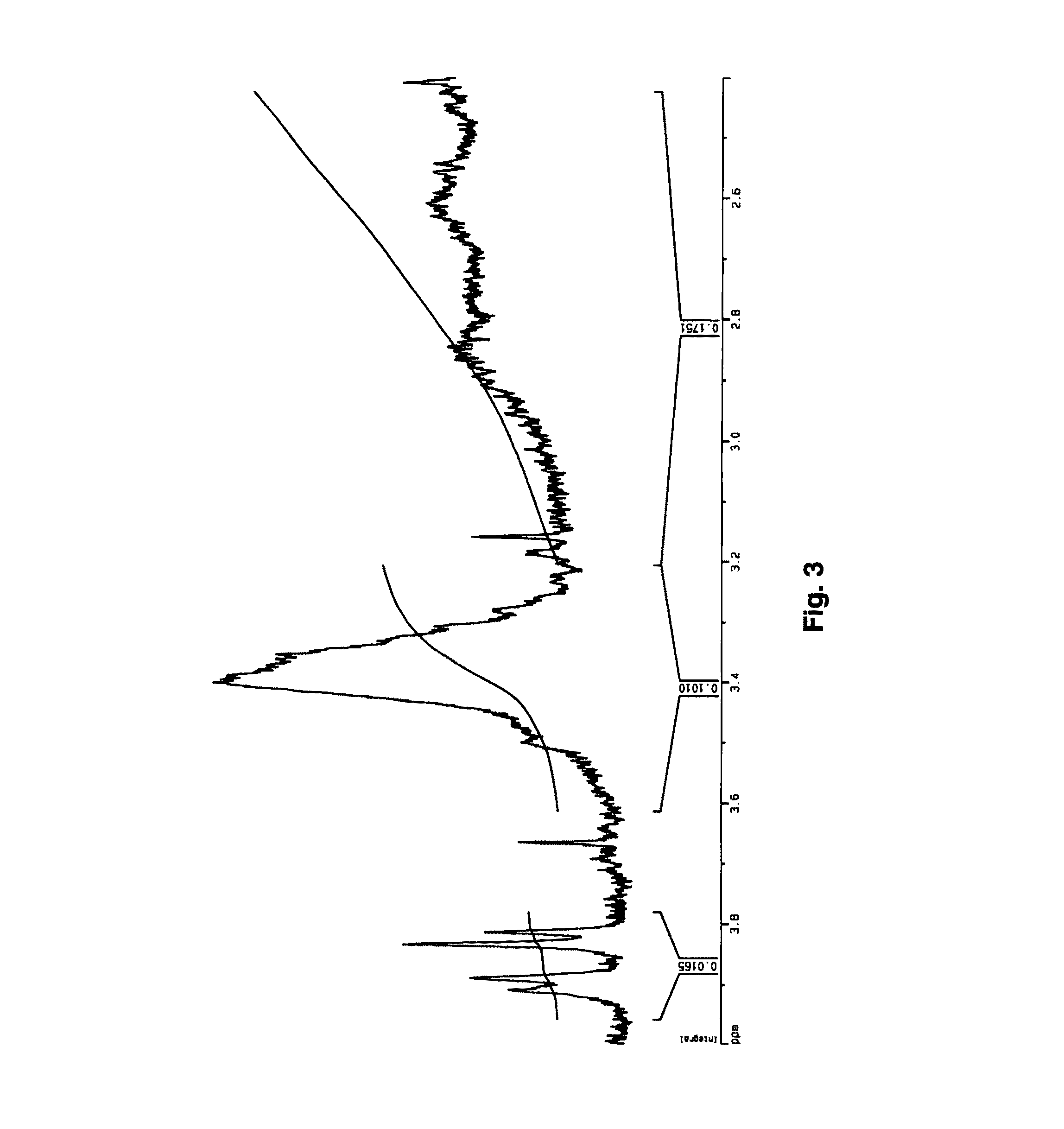Co-polymerization of an isoolefin with a halogenated co-monomer
a technology of halogenated comonomer and isoolefin, which is applied in the field of direct copolymerization of isoolefin with halogenated comonomer, can solve the problems of significant energy and solvent cost associated with the multi-step process, limited commercial success, and the production of halobutyl rubber, and achieve high conversion and selectivity.
- Summary
- Abstract
- Description
- Claims
- Application Information
AI Technical Summary
Benefits of technology
Problems solved by technology
Method used
Image
Examples
examples
Experimental
Materials
Synthesis of 4-Bromo-3-methyl-1-butene
[0057]Under nitrogen atmosphere 285 mg (1,50 mmol) CuI were added to 285 ml diethyl ether and stirred for 30 min at room temperature. To this solution 32 g (149.6 mmol) 1,4-Dibromo-2-butene were added. After an additional stirring of 30 min at room temperature the reaction mixture was cooled to −10° C. and 100 ml (300 mmol) of MeMgI (3.0 M, in diethylether) were added through a dropping funnel within 2 hrs. Then the reaction mixture was allowed to warm up to room temperature and was stirred for another 20 hrs. At the end of this period ice was used to react with excess MeMgI and the product was extracted several times with diethyl ether. The combined organic extracts were dried over MgSO4 before being distilled: 10.2 g (45%) 4-Bromo-3-methyl-1-butene, boiling point: 110-114° C. (b.p.: 110-112° C.5 [5]). The NMR data match with the data given in literature (R. W. Hoffmann et al., Liebigs Ann. Chem. 1992, 11, 1137). All chemic...
PUM
| Property | Measurement | Unit |
|---|---|---|
| mol % | aaaaa | aaaaa |
| mol % | aaaaa | aaaaa |
| molar ratio | aaaaa | aaaaa |
Abstract
Description
Claims
Application Information
 Login to View More
Login to View More - R&D
- Intellectual Property
- Life Sciences
- Materials
- Tech Scout
- Unparalleled Data Quality
- Higher Quality Content
- 60% Fewer Hallucinations
Browse by: Latest US Patents, China's latest patents, Technical Efficacy Thesaurus, Application Domain, Technology Topic, Popular Technical Reports.
© 2025 PatSnap. All rights reserved.Legal|Privacy policy|Modern Slavery Act Transparency Statement|Sitemap|About US| Contact US: help@patsnap.com



